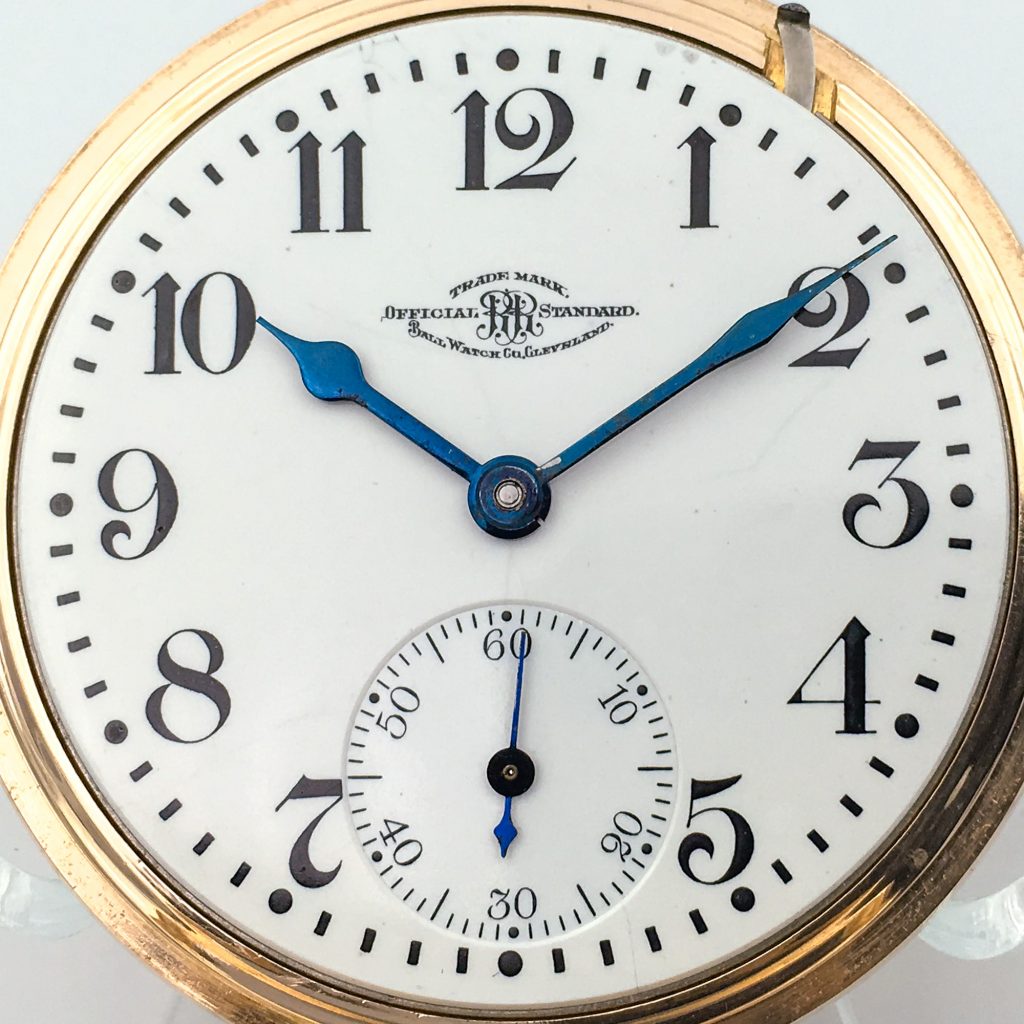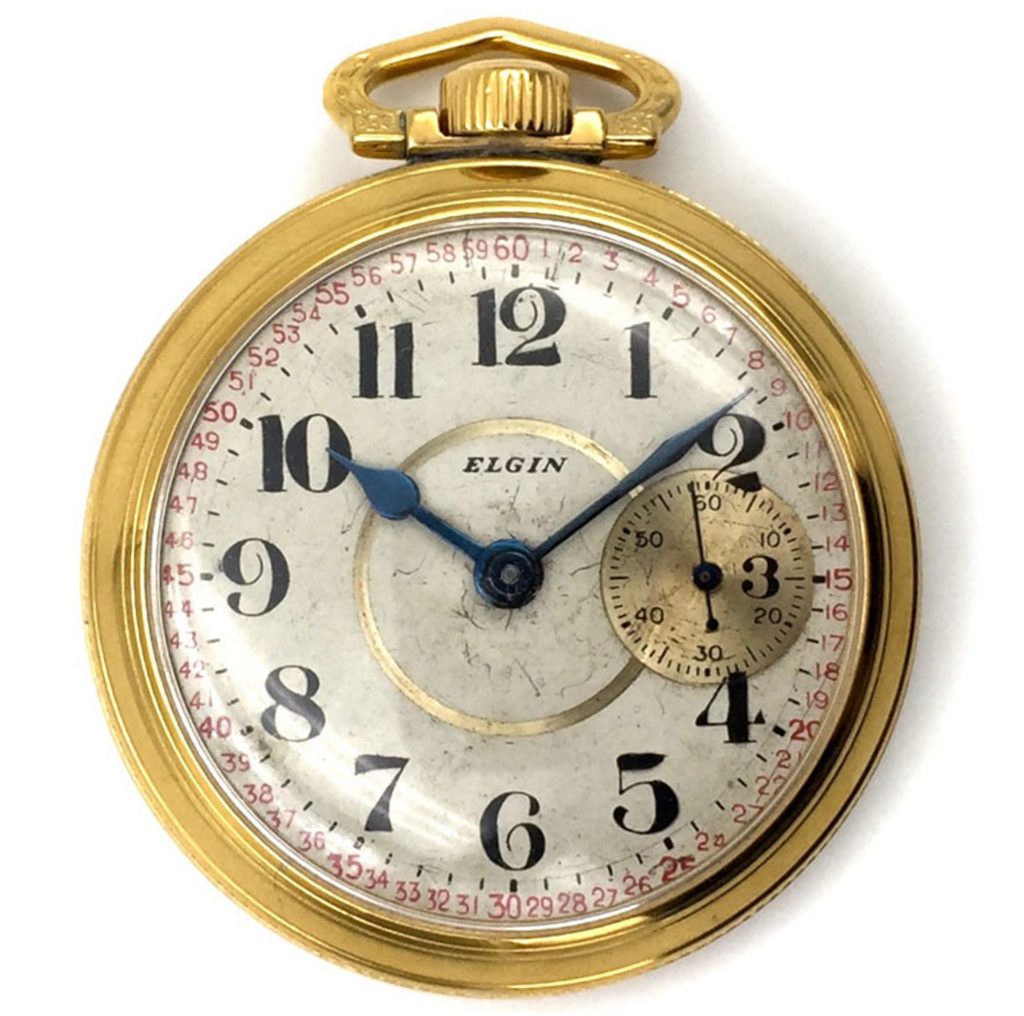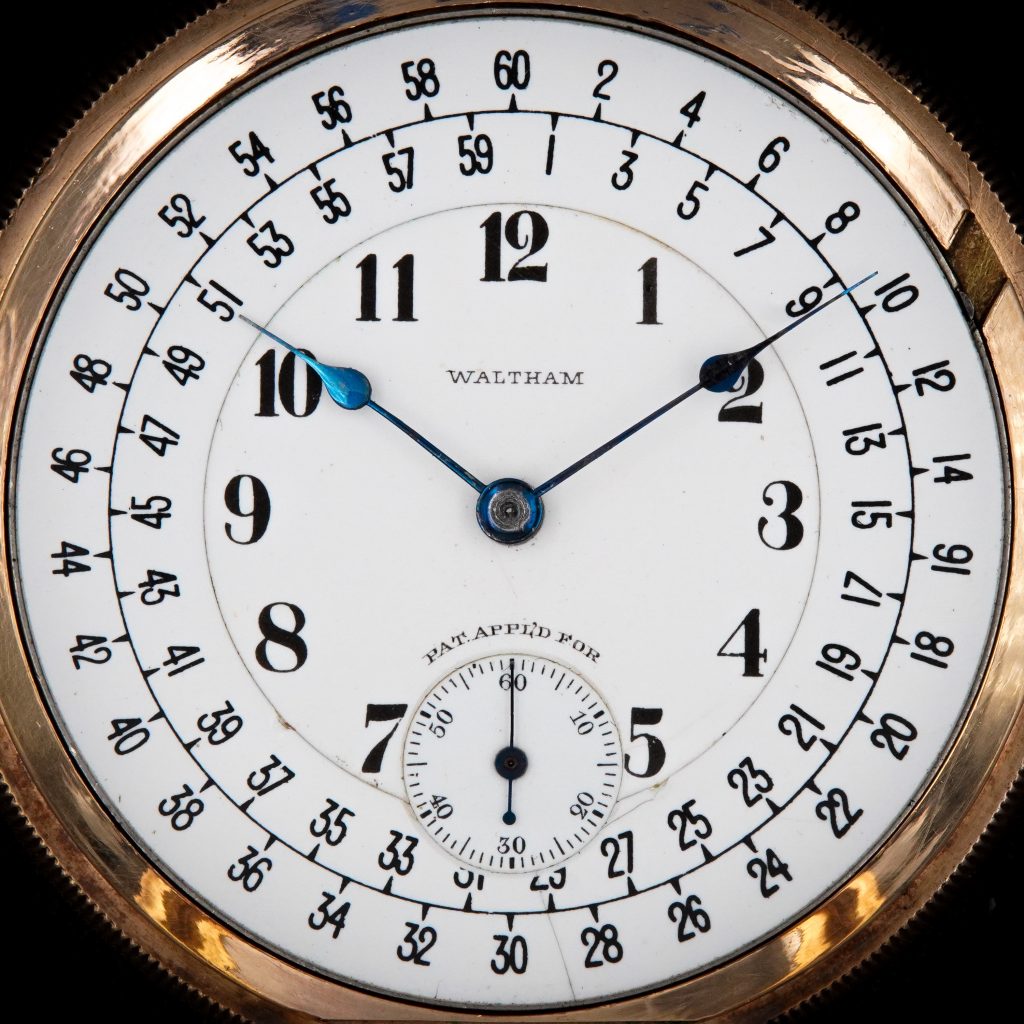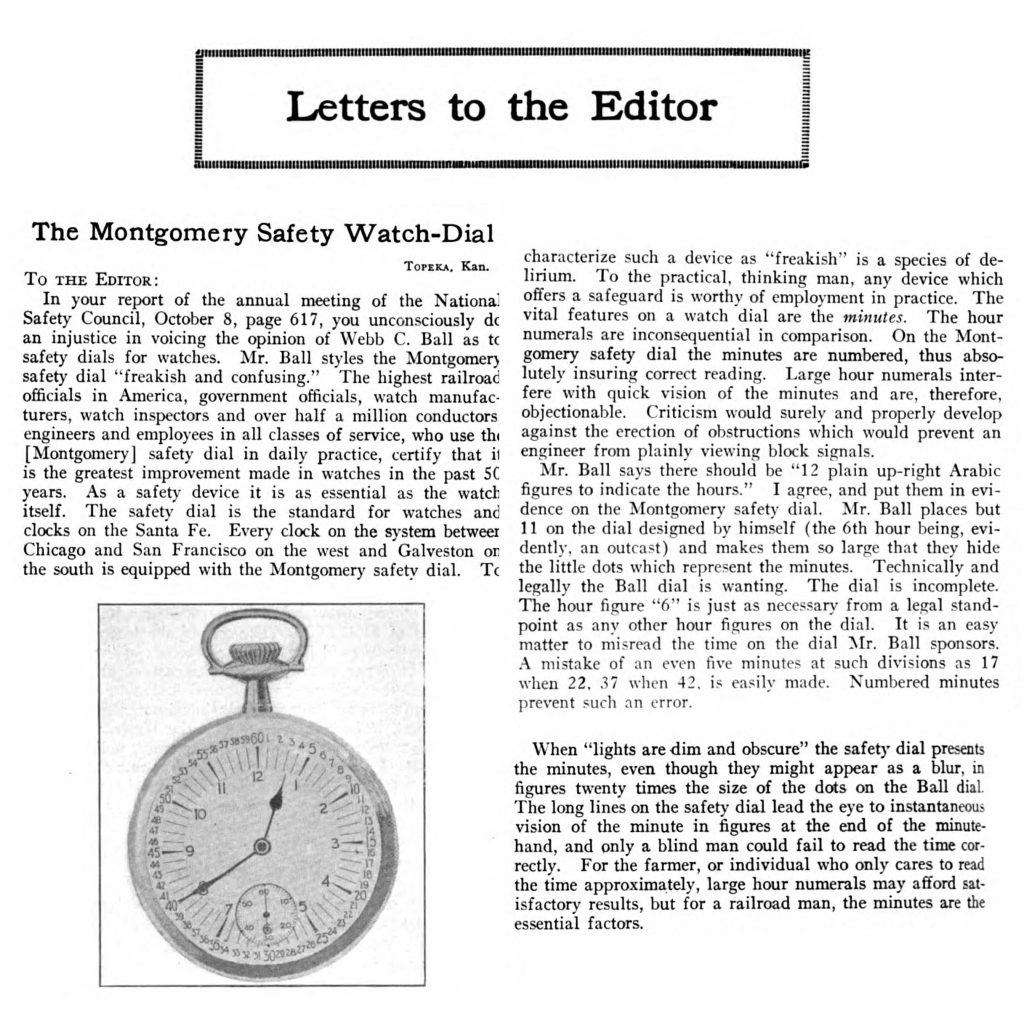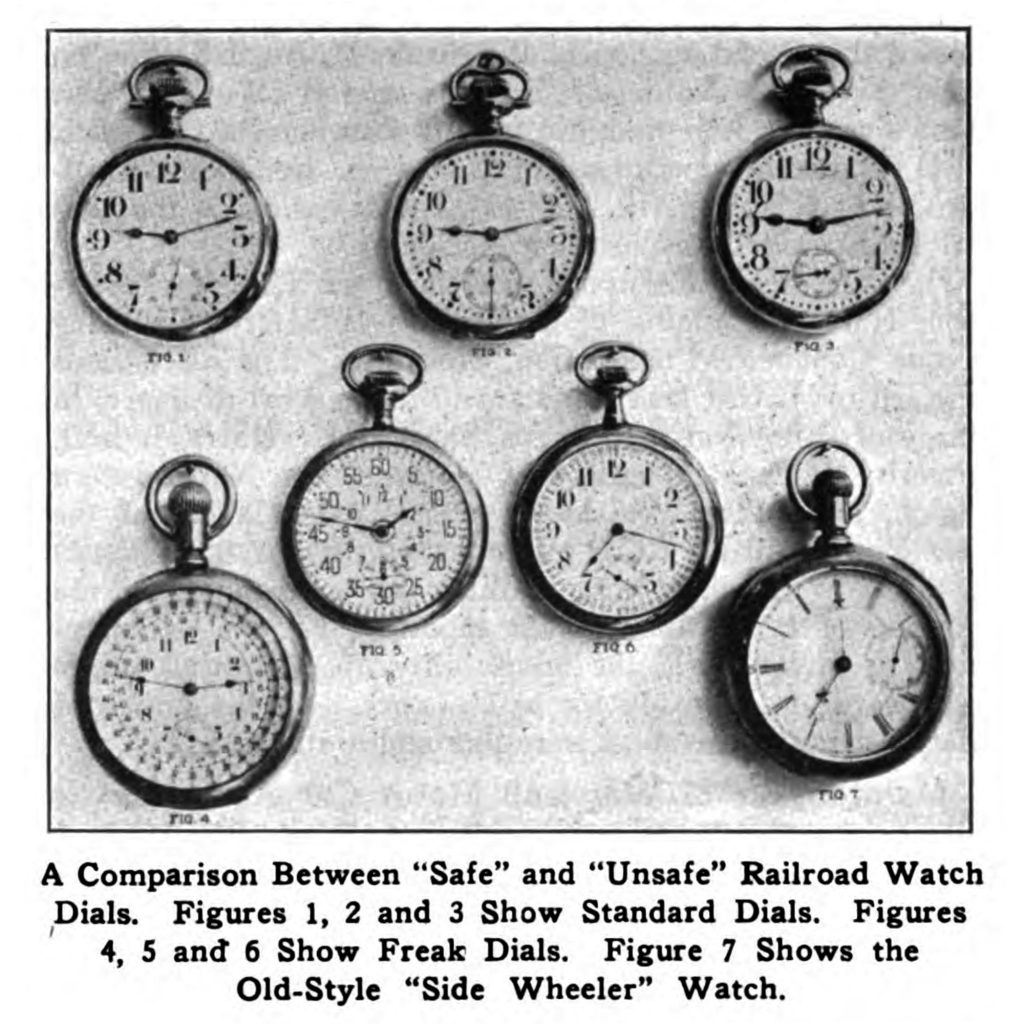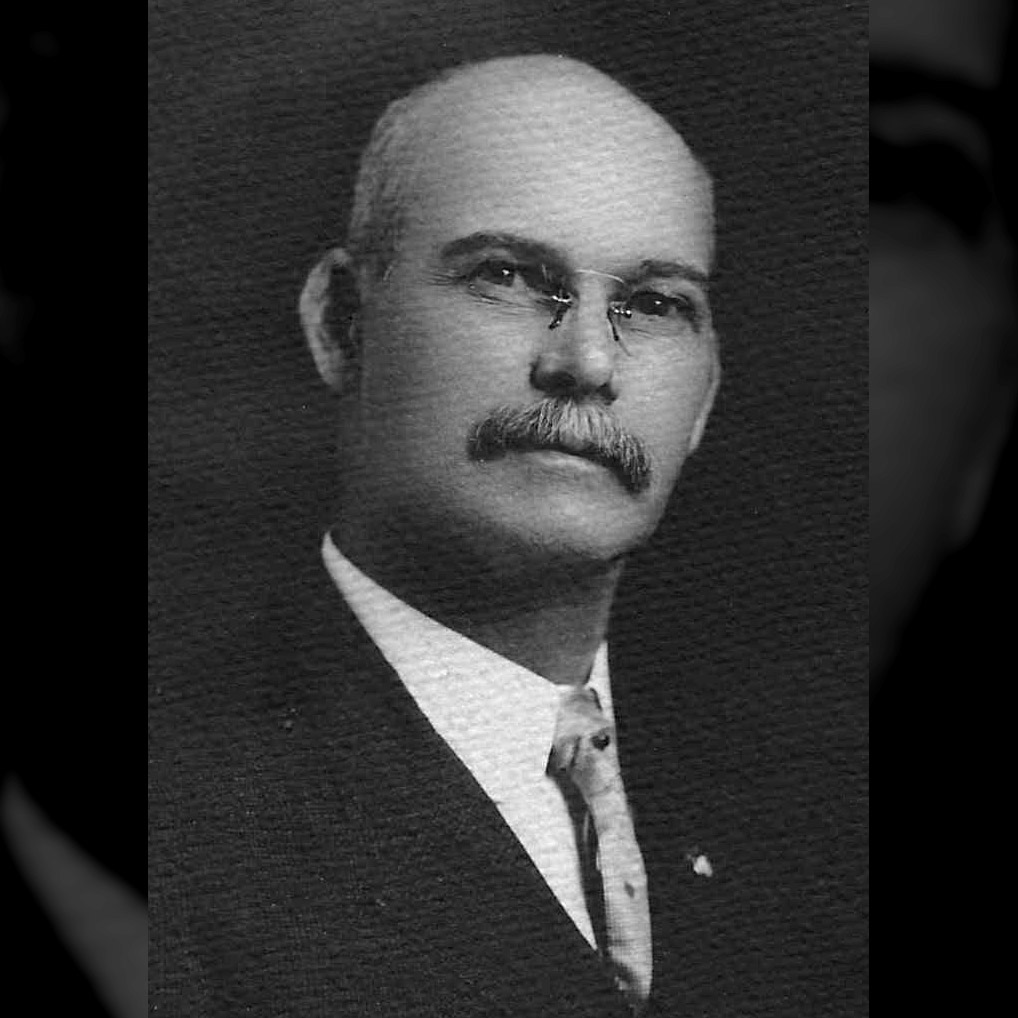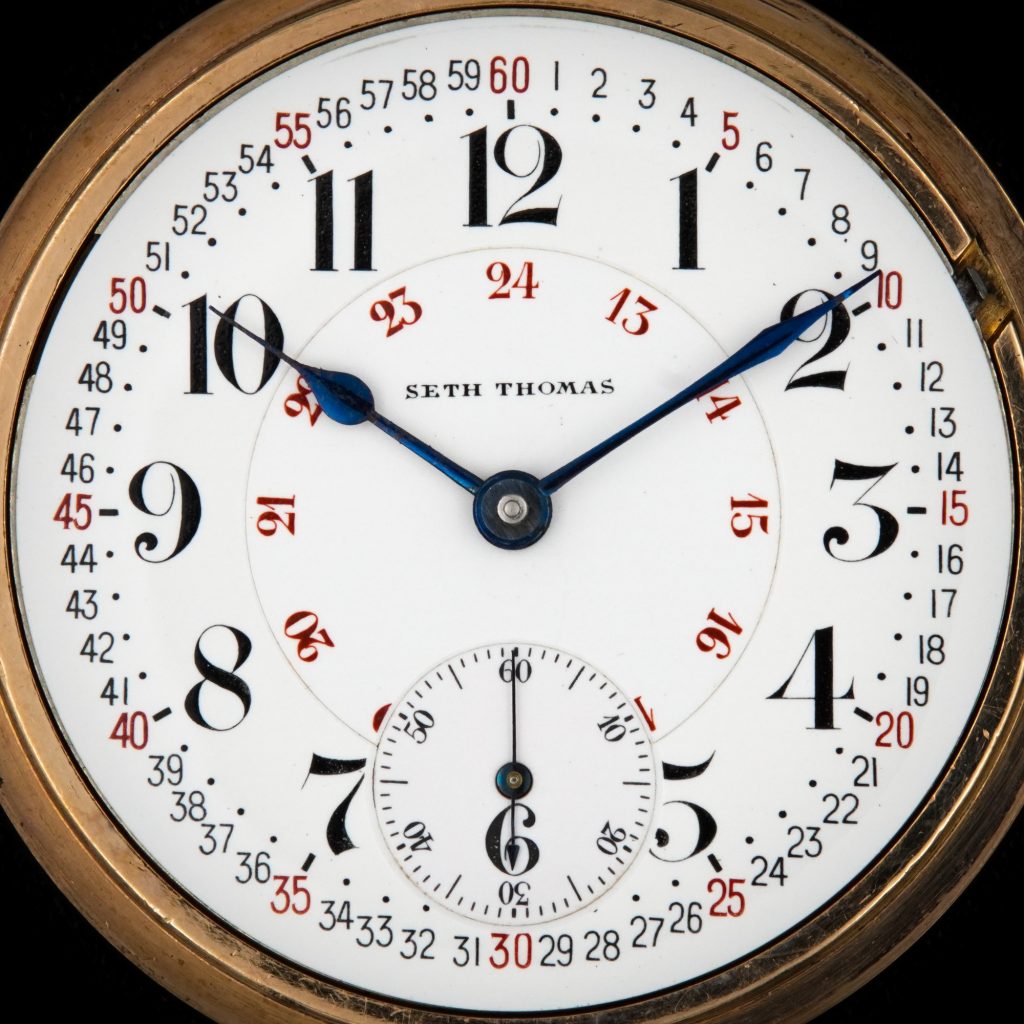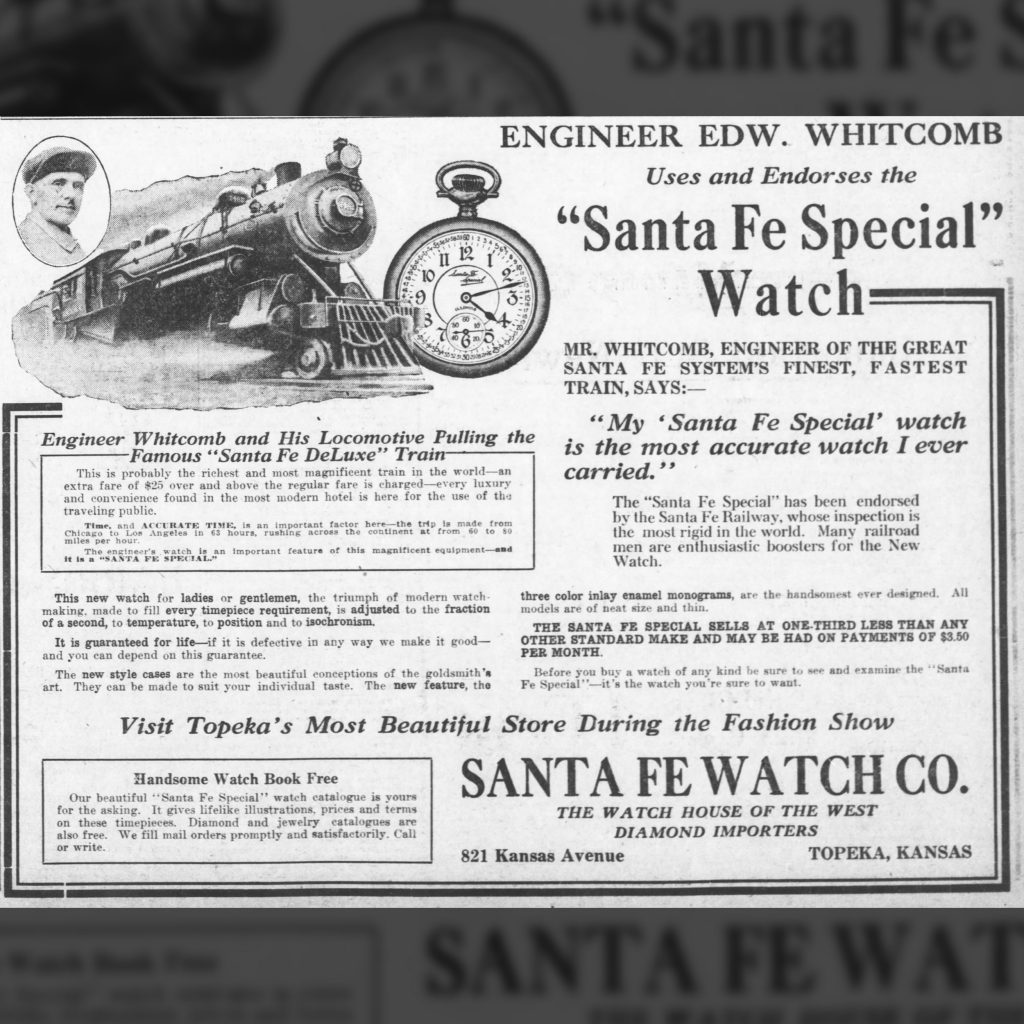
Time Inspection

Pictured: Ball “Official RR Standard” Railroad Dial, c.1905. Webb C. Ball was arguably the most prolific figure associated with time inspection on the railroads. As general time inspector for many.
Pictured: Elgin National Watch Co. Watch with Conversion Dial. As more railroads required watches to feature a pendant at the 12:00 position to qualify for service, conversion dials became a.
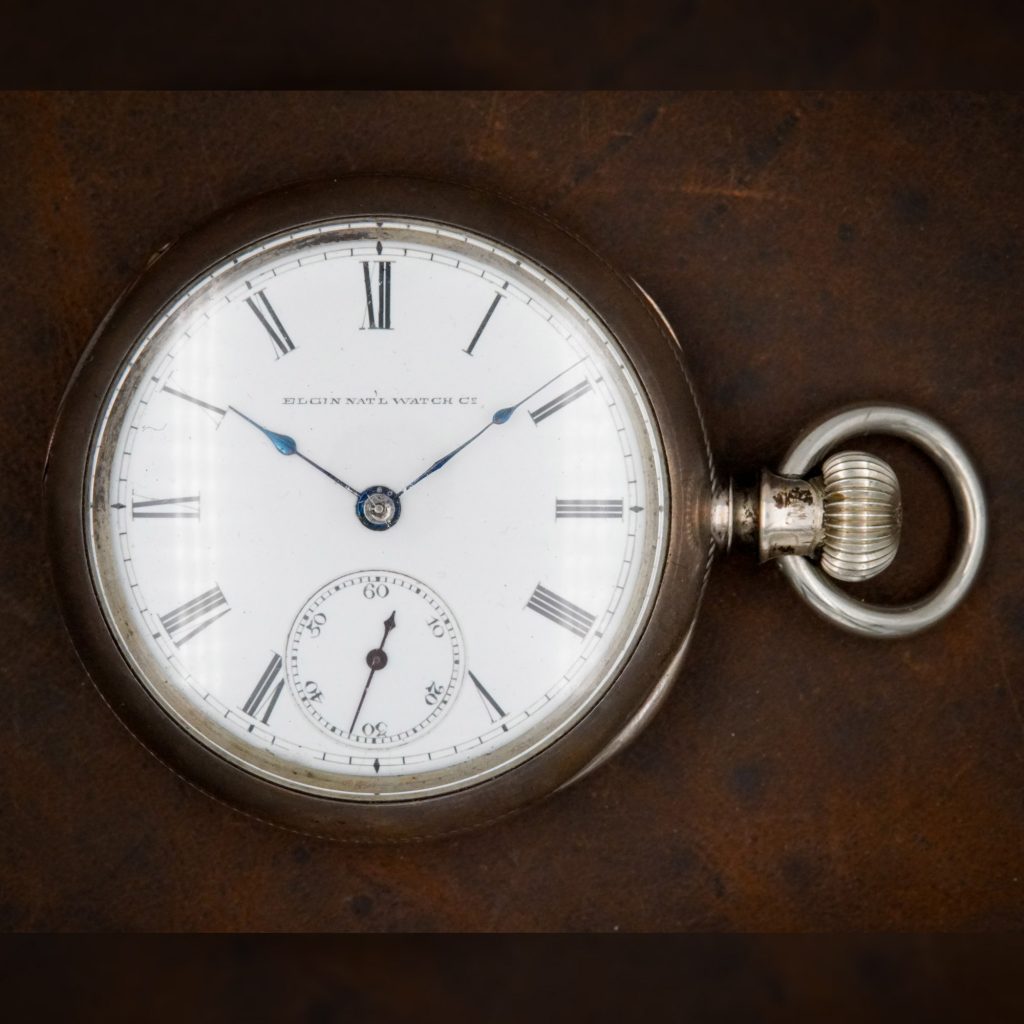
Pictured: Waltham’s Staggered Marginal Minute Dial, Attributed to Ezra C. Fitch, c.1900. Webb C. Ball was arguably the most prolific figure associated with time inspection on the railroads. As general.
Even though the Montgomery Safety Dial was not directly targeted by Webb C. Ball’s paper presented at the 1920 National Safety Council meeting, it was understood the dial was classified.
Pictured: Portrait of Henry S. Montgomery, Published in the Santa Fe Magazine, March 1924. Henry S. Montgomery established the watch service department of the Santa Fe Railway System and served.
Pictured: Seth Thomas “Montgomery Dial” with Continuous Marginal Minute Figures, Fitted on an 18-Size “Railway” Movement. As the five-minute marginal figures became popular on American watch dials in the 1890s,.

